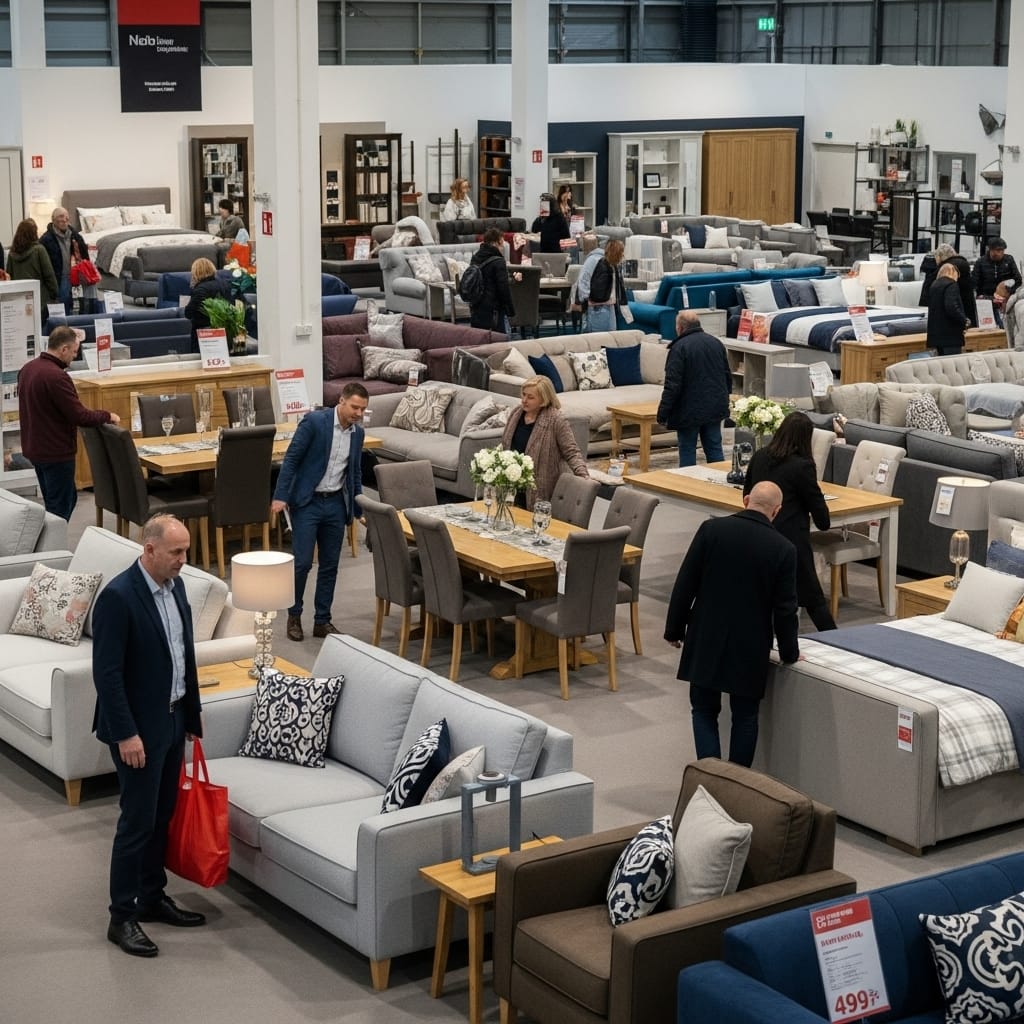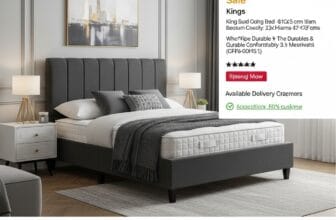
The Ultimate Guide to Finding the Best Furniture Sale in the UK: Unlock Incredible Savings
There’s a unique thrill that comes with finding the perfect piece of furniture. It’s more than just an object; it’s the future heart of a room, the backdrop for family gatherings, the cosy corner for quiet evenings. But let’s be honest, the price tag on that dream sofa or statement dining table can often turn the dream into a bit of a financial nightmare. This is where the magic of a furniture sale comes in, transforming daunting prices into delightful possibilities. However, navigating the world of discounts, deals, and door-busters in the UK requires more than just good timing; it demands a strategy. The landscape is vast, from the sprawling showrooms of high street giants to the curated collections of online boutiques and the hidden gems in local independent stores. This comprehensive guide is your new secret weapon. We’re here to demystify the process, revealing the best times to shop, the secrets to spotting genuine quality, and the savvy tricks that will ensure you walk away with a piece you adore, at a price you’ll love even more.
The Rhythms of Retail: When to Mark Your Calendar for a Furniture Sale
Timing is everything. Furniture retailers in the United Kingdom operate on a surprisingly predictable cycle of sales and promotions. Understanding this rhythm is the first step towards securing a significant bargain. Forget impulse buying; a little patience and planning can save you hundreds, if not thousands, of pounds.
The Big Four: Major Seasonal Sales

The retail calendar is punctuated by four major sale periods that offer the most substantial and widespread discounts. These are the events to plan for.
- The Winter/January Sale: The undisputed king of all sales. Starting from Boxing Day and running well into January, this is when retailers are desperate to clear out old stock from the previous year to make way for new spring collections. Discounts can be deep and widespread across all categories, from sofas and beds to wardrobes and dining sets. This is the prime time to find some of the steepest reductions of the entire year.
- The Spring Sale: As the days get longer and brighter, many of us get the itch to refresh our homes. Retailers capitalise on this with Spring sales, often centred around the Easter and May bank holiday weekends. While perhaps not as dramatic as the January sales, these events offer fantastic opportunities to snag deals on garden furniture, lighter upholstery, and brighter home accessories.
- The Summer Sale: Typically kicking off in late June or early July and running through August, the Summer sales are another major event. Similar to the winter sales, retailers are looking to clear the decks for their autumn and winter collections. This is a great time to find deals on items that didn’t sell during the spring season and to pick up indoor furniture at competitive prices as the focus shifts towards the cosier months ahead.
- The Autumn/Pre-Christmas Sale: As summer fades, an anticipatory buzz for the festive season begins. From late September through to November, you’ll see a flurry of promotions. Retailers know that people are looking to get their homes guest-ready for Christmas. This is an excellent time to find offers on dining tables that extend, comfortable sofa beds for visiting relatives, and plush new armchairs for fireside evenings.
Bank Holiday Bonanzas
Never underestimate the power of a long weekend. UK retailers love a bank holiday. From the Early May bank holiday to the Spring and August bank holidays, these three-day weekends are almost guaranteed to feature furniture promotions. Brands will often launch flash sales or offer special discount codes to entice shoppers who have a little extra time on their hands to browse, both in-store and online. Keep your eyes peeled in the week leading up to any bank holiday weekend.
End-of-Line and Clearance: The Hidden Goldmine
Beyond the big seasonal events, keep a constant watch for ‘clearance’ or ‘end-of-line’ sections on websites and in stores. This is where you’ll find the ex-display models, last season’s styles, or items with very minor, often unnoticeable, imperfections. The discounts here can be phenomenal. If you’re not fussed about having the very latest trend and are happy with a piece that might have been sat on a few times in a showroom, you can achieve savings of up to 70% or more. This is a particularly good strategy for big-ticket items like sofas, where an ex-display model offers incredible value.
Where to Hunt for Your Bargain: A UK Shopper’s Map
Knowing *when* to shop is half the battle; knowing *where* to look is the other. The UK furniture market is diverse, offering options for every taste, budget, and style. Broaden your horizons beyond your usual go-to spots to uncover the best deals.
The High Street Behemoths
Stores like John Lewis, Marks & Spencer, Next Home, and DFS are pillars of the British high street for a reason. They offer a vast range of styles and are incredibly active during the main sale periods. Signing up for their loyalty programmes or newsletters is a fantastic way to get early access to sales and exclusive member-only discounts. Their large showrooms also provide the invaluable opportunity to see, touch, and test out furniture before you commit – a crucial step for comfort and quality assessment.
The Digital World: Online Emporiums
Online-only retailers like Wayfair, Swoon Editions, and a host of smaller digital brands have revolutionised furniture shopping. Their lower overheads can often translate into lower baseline prices, and their sales can be frequent and aggressive. The key to successful online shopping is due diligence. Read reviews religiously, not just on the product page but on third-party sites like Trustpilot. Pay close attention to the detailed dimensions, and use masking tape to mark out the footprint of the furniture in your room to get a real sense of scale. Many online stores now offer augmented reality (AR) tools on their apps, allowing you to virtually place a piece of furniture in your home – a game-changer for avoiding costly mistakes.
Independent Boutiques and Local Makers
Don’t overlook the charm and quality of independent furniture shops and local craftspeople. While they may not have the flashy 50% off sales of the big chains, they often have their own promotions or may be more open to negotiation. Building a relationship with a local store owner can lead to being tipped off about upcoming deals. Furthermore, you’re investing in unique design, high-quality craftsmanship, and the local economy. Sometimes, the best value isn’t the biggest discount, but the highest quality for your money.
Outlet Stores: A Treasure Hunt
Many larger brands have dedicated outlet stores, often located in retail parks on the outskirts of towns and cities. These are filled with discontinued lines, customer returns, and pieces with slight cosmetic damage. Shopping at an outlet can feel like a treasure hunt, and it requires a keen eye and a bit of patience. Always inspect items thoroughly from every angle before purchasing, as outlet stock is often sold as seen and may have a different returns policy.
The Savvy Shopper’s Toolkit: How to Spot a True Bargain
A sign screaming “SALE” doesn’t automatically mean you’re getting a good deal. To truly master the art of sale shopping, you need to become a discerning buyer, armed with knowledge and a critical eye. This is how you separate the genuine bargains from the marketing tricks.
1. Do Your Homework Before the Sale
The biggest mistake you can make is to start Browse without a plan. Before a sale period even begins, do your research.
- Measure Up: Measure your space meticulously. Note down the maximum height, width, and depth for any piece of furniture. Don’t forget to measure doorways, stairwells, and tight corners to ensure your new purchase can actually get into the room.
- Define Your Style: Create a mood board. Save images of rooms and furniture pieces you love. This will help you stay focused and avoid being swayed by a heavily discounted item that simply doesn’t fit your aesthetic.
- Set a Firm Budget: Know exactly what you are willing to spend. A sale is only a good deal if you can comfortably afford it.
2. Become a Price Historian
Some retailers have been known to inflate the ‘original’ price of an item just before a sale to make the discount appear larger than it is. If you’ve identified a piece you love ahead of time, keep a record of its price in the weeks leading up to the sale. You can do this with simple screenshots or by using browser extensions that track price history. This will reveal whether the ‘sale’ price is a genuine reduction.
3. Look Beyond the Price Tag: The Quality Checklist
A cheap sofa that sags after a year is not a bargain. Quality should always be a primary consideration, even in a sale.
- Check the Frame: For sofas and chairs, a solid hardwood frame (like oak, ash, or beech) is far superior to cheaper particleboard or plastic. Don’t be afraid to ask a salesperson what the frame is made of.
- Examine the Joinery: Look at how a piece is put together. For wooden furniture, traditional joints like dovetails and mortise-and-tenon are signs of quality craftsmanship, whereas staples and visible glue are red flags.
- Test the Cushions: Are the sofa cushions foam, fibre, or feather-filled? High-density foam wrapped in a layer of fibre or feather will hold its shape better over time than a simple fibre filling.
4. Read the Small Print
The headline price might be tempting, but hidden costs can quickly erode your savings. Always check the delivery charges. Some companies charge a flat fee, while others have tiered pricing based on the size of the item or your location. Also, confirm if assembly is included or costs extra. Finally, understand the returns policy for sale items. Sometimes, discounted goods have stricter return conditions, and you need to know your rights before you buy.
A Final Word: Shop Smart, Live Beautifully
A furniture sale in the UK is a fantastic opportunity to elevate your home without emptying your bank account. By combining strategic timing with diligent research and a focus on quality, you can navigate the sea of discounts with confidence. Remember to plan ahead, know what you’re looking for, and never be afraid to inspect a piece thoroughly. The goal is not just to find cheap furniture, but to find great furniture for less. Armed with this guide, you are no longer just a shopper; you are a savvy home curator, ready to find those perfect, enduring pieces that will bring you joy for years to come. Happy hunting!







